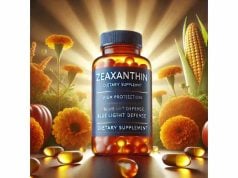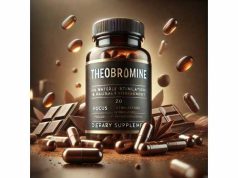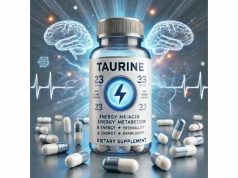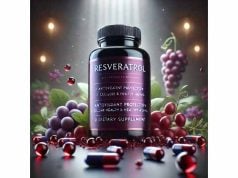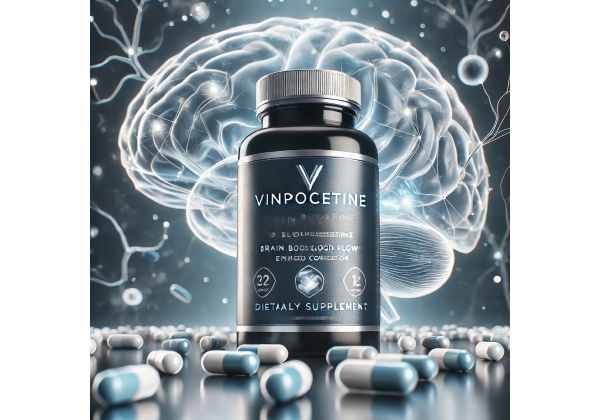
Vinpocetine is a synthetic compound derived from the periwinkle plant (Vinca minor) often highlighted for its potential to support brain health. By influencing cerebral blood flow and neurotransmitter systems, vinpocetine may help protect neurons, sharpen cognitive abilities, and promote emotional balance. Some individuals also explore it for addressing conditions such as mild cognitive decline or mood dysregulation. Though still considered a niche supplement in many parts of the world, vinpocetine’s blend of neuroprotective and vasodilatory properties has drawn attention in research circles. In this article, we investigate vinpocetine’s scientific foundation, discuss its mechanisms for aiding mental well-being, and share practical guidelines for effective usage.
Table of Contents
- Background and Definition of Vinpocetine
- Mechanisms Underlying Vinpocetine’s Impact on the Brain and Mental Health
- Significant Advantages of Vinpocetine for Psychiatric and Cognitive Benefits
- Methods for Incorporating Vinpocetine into Your Daily Health Plan
- Recent Data and Research on Vinpocetine
- Frequently Asked Questions
- References and Sources
Background and Definition of Vinpocetine
Vinpocetine was first isolated and synthesized in the 1970s from an alkaloid (vincamine) found in the leaves of the periwinkle plant. Originally, it gained prominence in certain European countries for its potential to boost cerebral metabolism and possibly improve memory and learning. The compound’s usage later expanded to numerous global markets as an over-the-counter nootropic. Although vinpocetine remains less discussed than widely known substances like caffeine or omega-3s, it has carved a niche for itself among individuals seeking alternative ways to strengthen memory, elevate mood, and shield neurons from age-related decline.
Chemical Character and Similar Substances
- Relation to Vincamine: Vinpocetine is a semi-synthetic derivative, widely believed to have greater potency and fewer side effects than its natural precursor.
- Mechanistic Focus: Its principal effects involve influencing cerebral blood flow, potentially improving oxygen utilization and glucose metabolism in neural tissues.
- Distinction from Other Nootropics: While some nootropics primarily affect neurotransmitter levels, vinpocetine’s standout feature includes direct vasodilatory and neuroprotective actions.
Historical and Regulatory Status
- Eastern European Spotlight: Countries like Hungary and parts of Eastern Europe integrated vinpocetine into clinical practice for mild cognitive impairments or post-stroke therapies, although formal data remains variable.
- Over-the-Counter Availability: In regions like the United States, vinpocetine is often sold as a dietary supplement. Regulatory controversies sometimes arise due to debates on whether it should be classed as a pharmaceutical drug.
- Global Research: Over the past few decades, studies in both animals and humans have probed vinpocetine’s effect on memory formation, stroke recovery, and degenerative neurologic conditions.
Why It’s Tied to Mental Health
A stable supply of blood, oxygen, and key nutrients is fundamental for healthy brain function. By possibly optimizing cerebral circulation and metabolic activity, vinpocetine sets the stage for improved emotional regulation, sharper cognition, and resilience against neurological stressors. Such attributes underline vinpocetine’s promise for those aiming to improve mental health and prevent mental disorders within a broader integrative approach.
Mechanisms Underlying Vinpocetine’s Impact on the Brain and Mental Health
Vinpocetine is known for its multifaceted actions in the central nervous system. While precise pathways are still under investigation, established evidence points to several key processes that might underlie its supportive role in cognitive and emotional wellness.
1. Enhanced Cerebral Circulation
Vinpocetine functions as a cerebral vasodilator:
- Vasodilation: By relaxing smooth muscle in blood vessels, vinpocetine may improve blood flow to specific brain regions.
- Oxygen Uptake: With improved perfusion, neural tissue experiences greater oxygen availability—crucial for sustaining metabolic activities that maintain cognition and mood.
- Glucose Utilization: Some data also indicate that vinpocetine modulates glucose transport or metabolism in the brain, boosting energy supply to neurons.
2. Neuroprotective Antioxidant Effects
Free radicals and oxidative stress damage neuronal membranes and hamper neurotransmitter function:
- Scavenging Reactive Species: Preliminary in vitro findings suggest vinpocetine may curb lipid peroxidation and reduce the burden of reactive oxygen species (ROS) in neural cells.
- Attenuation of Inflammatory Pathways: By limiting oxidation, vinpocetine may dampen inflammatory mediators, shielding neurons from chronic inflammatory insults that can degrade mental health.
3. Modulation of Ion Channels and Neuronal Excitability
Proper neuron firing depends on balanced ion channel operation:
- Calcium Homeostasis: Abnormal calcium influx can lead to excitotoxicity; vinpocetine’s regulatory role might guard neurons from overstimulation.
- Voltage-Gated Sodium Channels: Some studies note that vinpocetine can modulate these channels, stabilizing neuronal membranes against erratic spikes.
- Preventing Signal Overload: Balanced excitability fosters clearer cognition and possibly steadier moods, as hyperactive circuits are often linked to anxiety, agitation, or mania.
4. Influence on Neurotransmitters
Although not as direct as typical antidepressants or anxiolytics, vinpocetine might:
- Boost Acetylcholine: By enhancing neuronal metabolism, the brain can maintain or increment the production of acetylcholine, essential for learning, attention, and memory formation.
- Dopamine and Norepinephrine: Some data imply subtle adjustments in catecholamine pathways, though the magnitude remains less pronounced than that of stimulants.
5. Enhanced ATP Production in Neurons
Energy deficits hamper neural plasticity and hamper mental performance:
- Augmented Mitochondrial Function: Increased blood flow plus improved glucose uptake fosters robust ATP synthesis, a boon for cognitive tasks that need intense neuronal firing.
- Faster Recovery from Stress: Neurons with ample ATP bounce back quicker after periods of heavy workload or stress—potentially mitigating emotional fatigue.
6. Anti-Inflammatory and Anti-Edema Effects
Some literature points out vinpocetine’s capacity to reduce edema or inflammation:
- Implications in Ischemic Conditions: By mitigating brain swelling or dampening certain inflammatory cytokines, vinpocetine can protect tissues in the aftermath of reduced oxygen supply.
- Reduced Neuroinflammation: Chronic, low-grade inflammation in the CNS often correlates with depression, anxiety, or even cognitive decay. Balancing this environment thus fosters stable mental states.
7. Potential Epigenetic and Gene Expression Roles
While less extensively documented, emerging theories propose:
- Gene Expression Modulation: By refining energy metabolism and inhibiting certain inflammatory cascades, vinpocetine might influence genes associated with neuronal plasticity.
- Synaptic Plasticity: Genes that promote new dendritic growth or synapse remodeling could be more active in an environment supported by improved microcirculation and reduced oxidative stress.
Through these diverse mechanisms, vinpocetine stands out as a supplement that addresses multiple facets of brain health—from fueling neurons with oxygen and energy, to safeguarding them from inflammatory and oxidative pressures. The net result can yield improved cognitive performance, emotional stability, and a more robust defense against stress-related disorders.
Significant Advantages of Vinpocetine for Psychiatric and Cognitive Benefits
Vinpocetine’s capacity to optimize blood flow, reduce inflammation, and aid neuronal firing correlates strongly with potential improvements across a variety of psychological and cognitive challenges. Here are key ways in which vinpocetine may help improve mental health or prevent mental disorders.
1. Cognitive Enhancement and Memory Support
Many nootropic aficionados note vinpocetine’s “brain-boosting” qualities:
- Sharper Focus: Higher cerebral perfusion and stable neuron energetics contribute to sustained attention and clarity, useful under high workload or academic pressure.
- Learning Efficiency: By ensuring robust synaptic function, vinpocetine might facilitate the encoding of new information.
- Memory Retention: Preliminary data from small-scale trials indicates that older adults with mild cognitive decline show modest gains in recall tasks after consistent supplementation.
2. Alleviation of Mild Depression and Mood Fluctuations
Though not recognized as an antidepressant, vinpocetine’s synergy in oxygenation and neurotransmission can offer:
- Subtle Mood Elevation: Better cerebral metabolism can help ward off mental sluggishness often tied to subclinical depression.
- Stress Resilience: Balanced neuronal excitability and improved nutrient supply might buffer stress responses, indirectly stabilizing emotions.
- Possible Add-On for Therapy: Some psychiatrists experiment with vinpocetine in conjunction with SSRIs or counseling to further support cognitive aspects of depression.
3. Potential Anxiety and Panic Relief
While not a classical anxiolytic, vinpocetine’s role in regulating excitatory signals may help:
- Reducing Overstimulation: If stress or panic partially arises from neuronal hyperactivity, stable conduction fosters a calmer baseline.
- Enhanced Calm Cognition: Increased oxygen availability can mitigate hyperventilation or tension associated with some anxiety episodes, though results vary widely.
4. Support Against Age-Related Neurodegeneration
Conditions like Alzheimer’s and vascular dementia revolve around compromised blood flow and progressive neuronal damage:
- Protecting Neurons: By delivering more oxygen and clearing waste effectively, vinpocetine can slow certain degenerative cascades.
- Maintaining Alertness: Even mild improvements in mental clarity can elevate quality of life in older populations, easing daily tasks and interactions.
- Adjunct to Conventional Treatments: Some European practices combine vinpocetine with cholinesterase inhibitors to achieve broader coverage of degenerative processes, but thorough large-scale data is needed.
5. Mitigating Brain “Fog” and Post-Stroke Challenges
Individuals recovering from stroke or dealing with chronic issues like fibromyalgia sometimes mention brain “fog” or difficulty concentrating:
- Boosting Recovery: By supporting localized cerebral blood flow, vinpocetine may accelerate the pace of rehabilitation, though robust, large-scale clinical trials remain inconclusive.
- Clarity in Chronic Conditions: Enhanced oxygenation often lifts the mental haze that can accompany chronic fatigue or autoimmune-related disorders.
6. Migraines and Headache Relief
Headaches often correlate with abnormal vasoconstriction or inflamed neural tissues:
- Cerebrovascular Regulation: Vinpocetine’s subtle vasodilatory effect could reduce certain headache triggers, though caution is necessary if migraines have a more complex root in excitatory pathways.
- Combined Therapies: Some individuals combine vinpocetine with magnesium, riboflavin, or herbal formulas to maintain stable vascular tone, thereby minimizing headache frequency.
7. Tinnitus and Vestibular Conditions
Though less proven, vinpocetine is occasionally recommended:
- Blood Flow to Inner Ear: Enhanced microcirculation might reduce tinnitus severity or accompanying dizziness, especially if tied to vascular insufficiency.
- Synergy with Ginkgo Biloba: Both substances claim circulatory benefits, although each person’s reaction will differ and professional oversight is ideal.
Clearly, vinpocetine’s potential mental health advantages extend across a broad spectrum—from fortifying memory and learning, to easing mild emotional turbulence, to assisting older adults in retaining mental agility. While not a one-size-fits-all solution, it can function as a valuable part of a nuanced, integrative approach to psychological and cognitive wellness.
Methods for Incorporating Vinpocetine into Your Daily Health Plan
Harnessing vinpocetine’s mild yet potentially meaningful benefits necessitates thoughtful selection of products, dosage consideration, and synergy with other lifestyle factors.
1. Choosing the Right Formulation
Vinpocetine is most commonly sold in capsule form:
- Standardized Extracts: Many products specify the amount of pure vinpocetine (often 5–10 mg) per capsule. Check that your product sources consistent quality.
- Combo Supplements: Some nootropic blends pair vinpocetine with other brain-friendly nutrients like bacopa, phosphatidylserine, or B vitamins. Ensure synergy aligns with your personal mental health objectives.
- European Prescription Versions: In certain nations, vinpocetine or a related compound (like cavinton) may require a prescription, primarily for neurological issues.
2. Suggested Dosage Guidelines
Optimal intake varies:
- Typical Range: Many individuals start with 5 mg once or twice daily, potentially escalating to 10 mg or 15 mg daily based on tolerance and desired effect.
- Gradual Introduction: If new to nootropics, begin with a lower dose (5 mg daily) to gauge response. Adjust upward after observing for side effects or improvements for at least a couple of weeks.
- Time of Day: Morning or midday usage suits those wanting mental clarity for daytime tasks. Avoid nighttime if you fear potential mild insomnia, though vinpocetine is typically not highly stimulating.
3. Safety and Potential Side Effects
Vinpocetine is generally viewed as well tolerated. Nonetheless:
- Low Blood Pressure: Because of vasodilatory properties, it can slightly lower blood pressure in some individuals, leading to dizziness or lightheadedness if taken in higher doses.
- GI Upset: Occasional reports of nausea or stomach discomfort exist, typically mitigated by taking it with meals.
- Medication Interactions: People on blood thinners or blood pressure meds, or with certain heart conditions, should consult a physician. Potential synergy or adverse interactions may occur.
4. Combining with Other Brain-Boosting Nutrients
For broader mental health coverage:
- Choline or Citicoline: Augmenting acetylcholine production can pair well with vinpocetine’s circulation benefits, potentially reinforcing memory tasks.
- Omega-3 Fatty Acids: Helping maintain neuronal membrane fluidity, fish oil or algae-based DHA/EPA can complement improved blood flow from vinpocetine.
- Phosphatidylserine: Another phospholipid linked to cortisol regulation and synaptic upkeep, possibly maximizing the cognitive vantage.
- Vitamin B Complex: Vital for energy metabolism in the brain, supporting the deeper synergy vinpocetine fosters via improved circulation.
5. Tracking and Adjusting
To confirm whether vinpocetine is paying off:
- Mood Journaling: Note day-to-day changes in emotional steadiness, focus, or stress tolerance.
- Cognitive Metrics: Online memory or attention tests can offer objective data.
- Long-Term Observations: Because nootropics can build up effects over time, measuring subtle changes over multiple weeks or months is advisable.
- Look for Plateaus: If initial benefits plateau, consider dose adjustments or co-nutrients to maintain progress.
6. Lifestyle Essentials
Even the best nootropic is limited if overshadowed by an unhealthy daily routine:
- Healthy Diet: Nutrient-dense meals with ample protein, healthy fats, and minimal processed sugars keep the brain stable.
- Quality Sleep: Tissue repair and memory consolidation happen during deep sleep, essential for reaping vinpocetine’s full mental benefits.
- Exercise and Stress Management: Physical activity further refines cerebral circulation, while mindful techniques (meditation, deep breathing) reduce the mental load that can hamper progress.
By pairing vinpocetine with comprehensive self-care—nutrition, rest, psychological support—individuals can create an environment where the compound’s vasodilatory, anti-inflammatory, and neuroprotective features can thrive, potentially moving them closer to their mental health objectives.
Recent Data and Research on Vinpocetine
While theobromine or caffeine might overshadow it in mainstream conversation, vinpocetine enjoys a dedicated niche in neuroscientific inquiry. The breadth of research is diverse, spanning from in vitro tests to moderate-scale clinical trials.
1. Clinical Trials in Cognitive Impairment
- Mild Age-Related Decline: Some older adult populations receiving vinpocetine for extended durations demonstrated modest improvements in short-term memory recall and daily function. However, results vary, and larger double-blind studies are necessary for conclusive proof.
- Post-Stroke Rehabilitation: In regions where vinpocetine is used clinically, a few trials reported better neurological scores among stroke survivors, possibly from enhanced cerebral perfusion and protective effects, though robust data sets remain limited.
2. Animal and Laboratory Studies
- Neuroprotection in Ischemic Models: Rodent experiments show vinpocetine administration can reduce infarct size and limit neuronal death following induced ischemia, tying these outcomes to improved vascular dilation and reduced oxidative damage.
- Exploring Anti-Inflammatory Pathways: Some in vitro results indicate that vinpocetine decreases the production of TNF-α and other inflammatory mediators, reinforcing a potential role in chronic neuroinflammation.
- Synaptic Plasticity Indications: Enhanced synaptic density or stability in the hippocampus has been hinted at, although more confirmatory data is needed.
3. Mood and Cognitive Performance Trials
Small-scale or pilot studies focusing on healthy subjects:
- Working Memory Tasks: Participants occasionally show better performance on tasks demanding sustained attention and information manipulation, likely due to heightened oxygen and glucose availability in key cortical areas.
- Subjective Mood Elevation: A fraction of test subjects anecdotally report feeling more mentally agile, though formal mood rating scales yield inconclusive but suggestive data in favor of subtle anti-fatigue or mild mood-lifting outcomes.
4. Safety Reviews and Meta-Analyses
Despite the encouraging findings, thorough meta-analyses remain scarce:
- Mixed Quality: Trials vary widely in sample size, dosage, and methodology. Some researchers highlight the necessity for more rigorous, large-scale, placebo-controlled trials to fully endorse vinpocetine’s usage for specific mental health disorders.
- Concerns About Regulation: In certain countries, ongoing debate about vinpocetine’s status as a supplement or drug occasionally stalls deeper-funded research programs.
- General Consensus: Among existing reviews, vinpocetine is typically depicted as relatively safe, with mild side effects, and as having plausible nootropic and neuroprotective potential that justifies further investigation.
As interest in nootropics continues to grow, vinpocetine’s established presence in certain international markets and the supportive, though incomplete, evidence for its beneficial roles are likely to fuel future studies. The compound’s capacity to serve as a complementary agent—particularly for mild cognitive decline or stress-related memory lapses—makes it worth watching in the evolving sphere of brain-centered supplements.
Frequently Asked Questions
Does vinpocetine actually improve memory?
Vinpocetine’s enhancement of cerebral blood flow and neuronal metabolism may help sustain sharper recall and focus. While some research shows mild memory benefits, personal responses vary, and not everyone experiences noticeable improvements.
How long before I notice mental health effects?
It can take several weeks of consistent supplementation for any changes in mood or cognition to emerge. Many users see subtle progress around the 2- to 4-week mark, though others might need extended periods.
Is vinpocetine safe to combine with other supplements?
Yes. Vinpocetine typically pairs well with choline, phosphatidylserine, or omega-3 fatty acids for added nootropic or neuroprotective effects. However, check with a healthcare provider if you take medications for blood pressure or neurological conditions.
Does vinpocetine help with anxiety or depression?
Its main advantage is thought to lie in improved blood flow and mild neuroprotection. While it might ease certain depressive or anxious symptoms indirectly, vinpocetine is not a primary treatment for such conditions. Professional guidance is crucial.
What’s the standard dosage range?
Common daily amounts range from 5–15 mg, often split into 1–3 doses. Always start at the low end to assess tolerance, especially if you’re on prescription medication or prone to low blood pressure.
Should I take vinpocetine with food or on an empty stomach?
Many individuals consume vinpocetine with meals to curb potential digestive discomfort or mild nausea. Testing different approaches can help you determine which timing method feels best.
References and Sources
- Patyar S, et al. “Vinpocetine: A Possible Cytoprotective Agent.” International Journal of Biological Sciences. 2011;7(4):309–316.
- Szatmari SZ, Whitehouse PJ. “Vinpocetine for cognitive impairment and dementia.” Cochrane Database of Systematic Reviews. 2003;1:CD003119.
- Oláh CM, et al. “Vinpocetine modulates neuronal excitability: Mechanisms related to voltage-gated sodium channels.” Neurochemistry International. 2017;108:83–92.
- Tóth L, et al. “Protective roles of vinpocetine and pentoxifylline in rat models of global cerebral ischemia.” Brain Research. 2003;971(2):225–232.
- Bonoczk P, et al. “Vinpocetine reduces cerebral infarction in ischemic stroke.” International Journal of Neuroscience. 2000;101(1–4):277–283.
- Subhan Z, Hindmarch I. “Psychopharmacological effects of vinpocetine in normal healthy volunteers.” European Journal of Clinical Pharmacology. 1985;28(5):567–571.
- Pereira C, Agostinho P, Oliveira CR. “Neuroprotective properties of vinpocetine in vitro.” Advances in Experimental Medicine and Biology. 2002;513:429–436.
- Jeon W, et al. “Vinpocetine in the management of cognitive dysfunction: Evidence-based considerations.” CNS & Neurological Disorders – Drug Targets. 2020;19(4):293–303.
Disclaimer:
This information is offered for educational purposes and is not a substitute for professional medical advice, diagnosis, or treatment. Please consult a healthcare practitioner regarding any concerns about mental health or supplement usage.
If you’ve found value in these insights, we invite you to share this article on Facebook, X (formerly Twitter), or your go-to social platforms. Also, don’t forget to follow us online for more empowering tips on mental and cognitive wellness!

